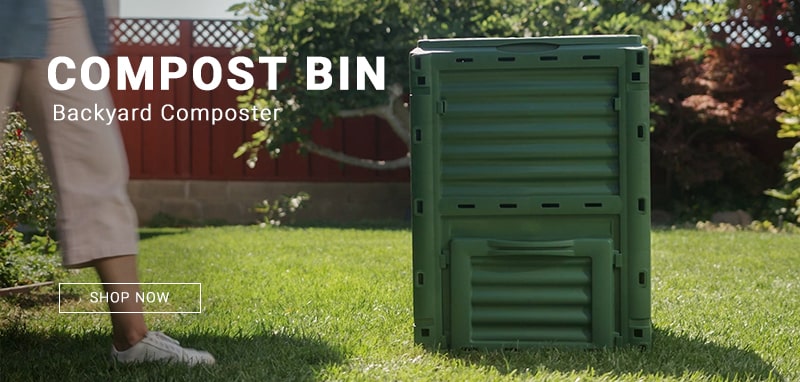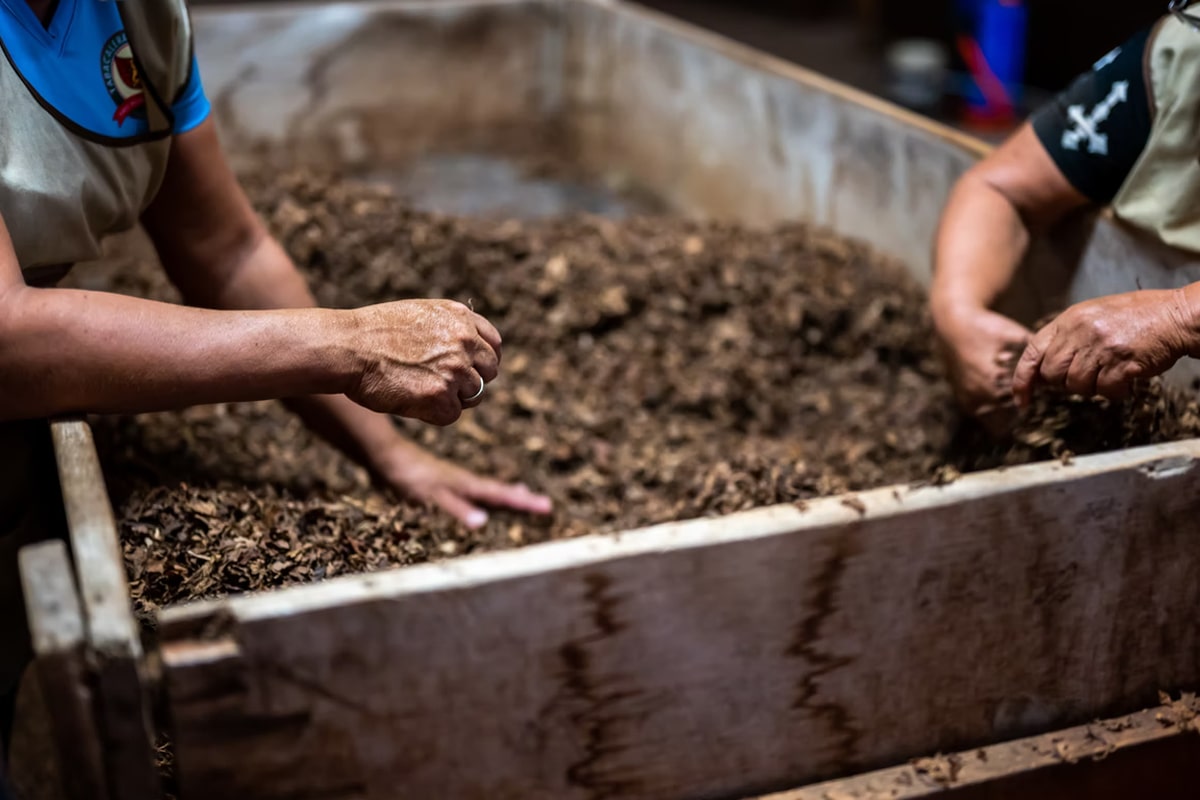Composting seems simple enough for the uninitiated but there is more to it than simply chucking your kitchen wastes in a pile or an outdoor compost bin. The conditions have to be right for microbes to process the organic materials and transform these into compost for the garden.
To know if you’re doing composting right is the noticeable rise in temperature while turning the organic materials - the compost literally “cooks” until it’s ready to use. The rise in temperature is a sign that the microbes are working hard, breaking down the organic wastes. To achieve this, the compost should provide the ideal environment for microbes to thrive and you can only do this if you are putting the right compost materials in the pit.
If you are unsure what goes in your compost bin, here is our composting cheatsheet. We also have our simple guide to composting if you are doing this for the first time.
Contents []
How to Get Your Compost Pile Cooking?

“How do you fix common compost problems? Find out here how to resolve composting problems and learn some tips to make healthy compost. We prepared a list of possible issues you may encounter with your compost bin and the things you can do to fix them.”
Assuming that you’ve already built your compost and it’s currently going through the composting process, how do you know if you’re doing it properly? If say, you feel like there’s something wrong with the compost and you’re unsure what to do, here are some troubleshooting tips:
What to do when Compost pile won’t heat up?
There are many reasons why a compost pit won't heat up. It could be too wet, too dry, too big, too small, or the balance between green and brown materials has been disrupted. You'll need to get to the bottom of the problem to rebalance the nitrogen, carbon, oxygen, and bacteria in the pile.
Microbes will drown if the pile has too much water. We suggest spreading the materials and turning the compost pile regularly to air out the materials. If the compost pile is too wet, add a bit of moisture until the materials have a "spongy" texture. If the pile has too many green materials, add more brown materials and vice versa.
What to do when the compost pile is soggy?
Compost has to be moist and spongy, never wet or soggy. If the texture resembles more like sludge, the compost is too wet and won't heat up. A quick fix would be to add more dry materials into the mix, such as shredded paper, pea straw, cardboard, and newspaper. Turn the compost three to four times a week to boost air circulation and dry out the organic materials.
What to do for smelly compost?
If your compost pit stinksto high heaven, it means the pile has gone anaerobic. This simply means the compost doesn't have enough oxygen, so the breakdown of the materials is not only taking too long, but it also produces a putrid smell, like rotting eggs. To bring balance back into the pit, add more carbon into the compost pile. Usually, smelly compost is caused by too many green materials. Mix brown materials like shredded newspaper, straw, and pine needles into the pile. These materials will absorb the excess moisture. Don’t forget to turn the pile several times per week to air out the organic materials and speed up their breakdown.
What to do with coarse compost?
Is the compost clumpy instead of having a nice, loose texture? This happens when some of the materials take too long to break down. You can speed up the process by chopping or shredding the materials and putting them back in the pile. You can also separate the leftover chunks and then mix them into the next pile.
More Composting Troubleshooting Tips
Compacted compost: Is compost supposed to be this clumpy? The compost should have a loose texture. If it is hardened so much and hard to work into anything, the materials have compacted through settling. This problem occurs when a too-wet compost pile becomes too dry, causing compost balls to form. Turning the pile regularly will reduce the chances of compacting through settling. Adding shredded leaves and paper materials will also soak up excess moisture that could lead to compaction.
Bugs in the compost: It's normal for pillbugs, sowbugs, and small insects to burrow into the compost because these animals are attracted to decay. Most of these bugs are harmless and are, in fact, beneficial because they speed up the breakdown of organic materials. Raising the compost temperature is one way to get rid of compost critters that may harm your plants. Try increasing the temperature to above 120°F by watering the pile well, adding manure, blood meal, or shellfish shells and other nitrogen-rich materials. Keep the pile cooking for at least two weeks to keep bugs away. If the problem persists, get a tarp, spread the compost around in direct sunlight.
Dry compost: If the compost is too dry because of the materials you used, just re-wet the heap with water (preferably collected rainwater) and reduce the number of dry materials if you've been adding some. Adding fresh materials is also a great way to boost moisture. But if the compost is dry because of the climate, just add water to the compost pile. It should be damp like a sponge, not too wet.
Sprouting plants in the compost: If you're seeing weeds sprouting in the compost, remove them by hand. On the other hand, if plants are sprouting, transplant them to your garden!
Animals found the compost: Rats, skunks, raccoons, opossums, and even dogs could smell a compost from miles away, and keeping them out of one is essential. One way to do this is to mix wood ash with the kitchen scraps and then pile this on top of the compost. If this does not work, we suggest building a compost pile cover or, better yet, investing in a covered outdoor compost bin. Look for a compost bin that has a sturdy, UV-resistant cover that will keep pests away!
Frequently Asked Questions

Can I keep adding kitchen scraps to my compost?
If you use the cold or passive composting method, you can keep adding organic materials into the pile or outdoor compost bin. But if you're using the hot composting process, adding more materials into the "cooking" compost will extend the time it takes to break everything down completely.
How to maintain my compost until it is ready to use?
Just mix and turn the compost once a week to air out and break down the organic materials. You can add more water if the compost becomes too dry or add brown materials if it's too wet.
What are the signs that my compost is ready?
You know that compost is ready to use if it starts taking on a dark brown, crumbly texture. The compost looks and feels like dark, rich earth with no foul smell. It should smell like earth. If you’re no longer seeing bits of organic wastes in the compost, the compost is finished.
It’s incredible how household and garden wastes could turn into natural fertilizers like compost. Are you ready to give composting a try? You can start with a modest pile or invest in a proper outdoor compost bin; it’s really up to you. Whichever method you choose to make compost, the end result is the same - you are ensuring the health of the garden while also helping the environment. Try composting today and shop for the ECOgardener outdoor compost bin.




